
Honda City vs Skoda Slavia vs Volkswagen Virtus: Triple Threat Sedans...
- Jun 14, 2022
- Views : 8082

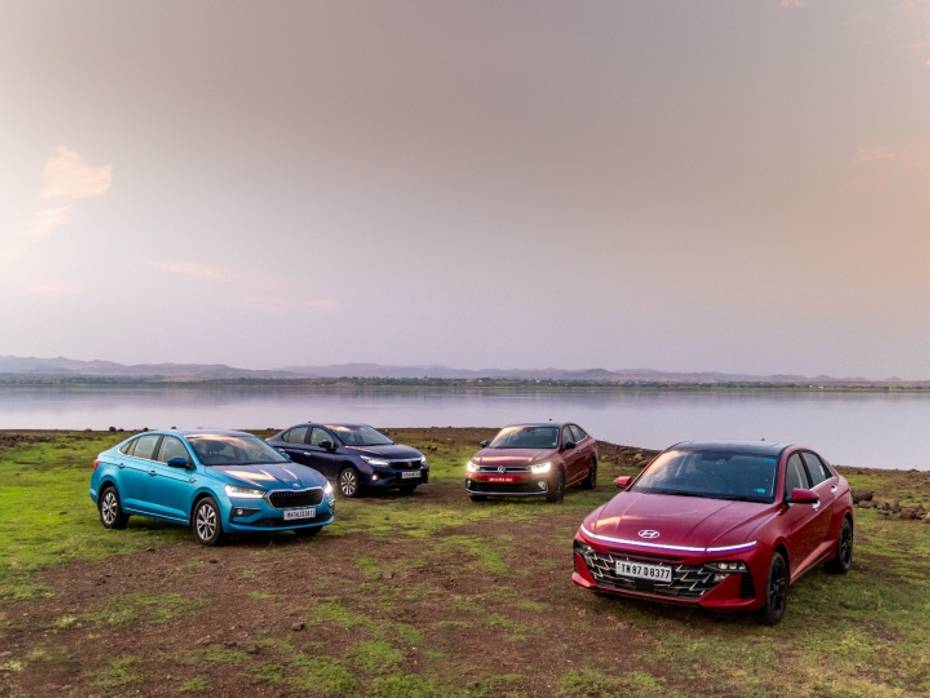
We’ve been here before with the VW Virtus, Skoda Slavia and the Honda City – trying to figure out which is the best compact sedan to have in terms of ride and handling. But this time around, there’s a new player that’s questioning the status quo. Oh and also, the Honda City has gotten a mid-life facelift since we were here last time around, so it’s only fair that we compare the four sedans based on what we do best - strap a V box, accelerate, decelerate, put them through rough roads and throw them around a smooth left hander – to find out which one has the best ride and handling experience. But before we begin, let’s get the specs out of the way.
|
Honda City |
Skoda Slavia |
Volkswagen Virtus |
Hyundai Verna |
|
|
Engine |
1.5-litre naturally aspirated |
1.5-litre TSI |
1.5-litre TSI |
1.5-litre turbo petrol |
|
Power (PS) |
121PS |
150PS |
150PS |
160PS |
|
Torque (Nm) |
145Nm |
250Nm |
250Nm |
253Nm |
|
Transmission |
CVT |
7-speed DSG |
7-speed DSG |
7-speed DCT |
All the four sedans pack a 1.5-litre petrol engine beneath their hood, but while three of them are turbo-charged, the Honda City sticks to the pure naturally aspirated setup, paired to a city-friendly, smooth-shifting CVT gearbox. In terms of on-paper output figures, the Hyundai Verna takes the top spot after a tie between the Skoda and VW siblings. How does that translate into the real world? Let’s find out via an acceleration test:
|
Honda City |
Skoda Slavia |
Volkswagen Virtus |
Hyundai Verna |
|
|
0-100kmph |
12.74 seconds |
9.32 seconds |
9.03 seconds |
8.49 seconds |
|
20-80kmph |
7.25 seconds |
5.33 seconds |
5.37 seconds |
5.65 seconds |
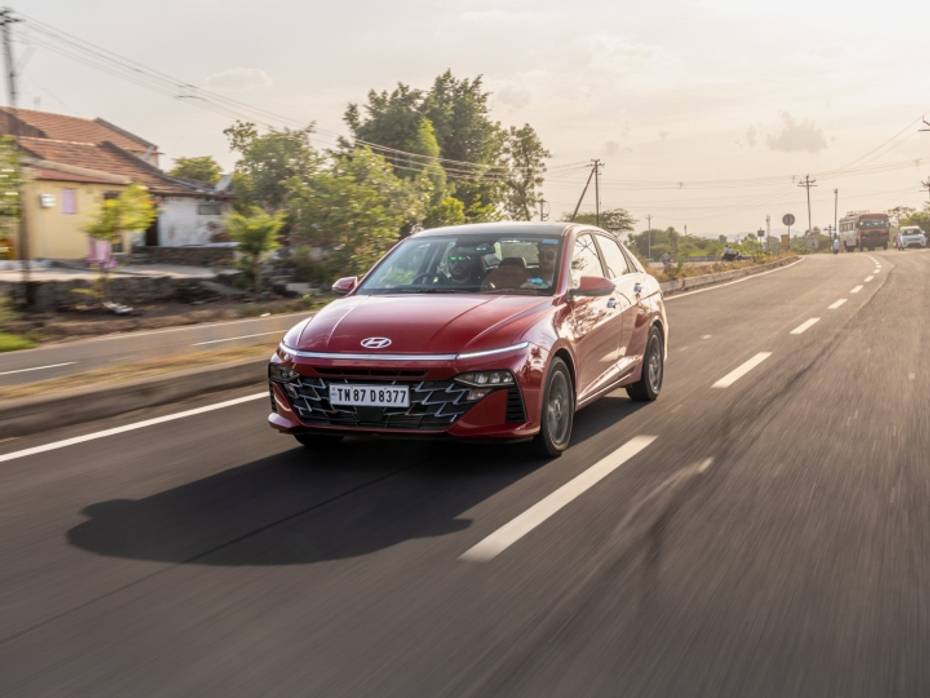
The playing field is a level one here, considering we’ve got the same engine displacement paired to automatic transmission in all the four contenders. The newest of the lot, the Hyundai Verna, bags pole position here, with more than half a second to spare over the next closest thing which happens to be the Virtus.
Its cousin, the Skoda Slavia runs close in third position, while the Honda City’s least powerful powertrain amongst the lot and the slower CVT gearbox hand it the fourth position in this test.
|
Honda City |
Skoda Slavia |
Volkswagen Virtus |
Hyundai Verna |
|
|
100-0 kmph |
41.85 metres |
40.05 metres |
40.66 metres |
40.80 metres |
|
80-20 kmph |
26.39 metres |
24.79 metres |
25.07 metres |
26.45 metres |
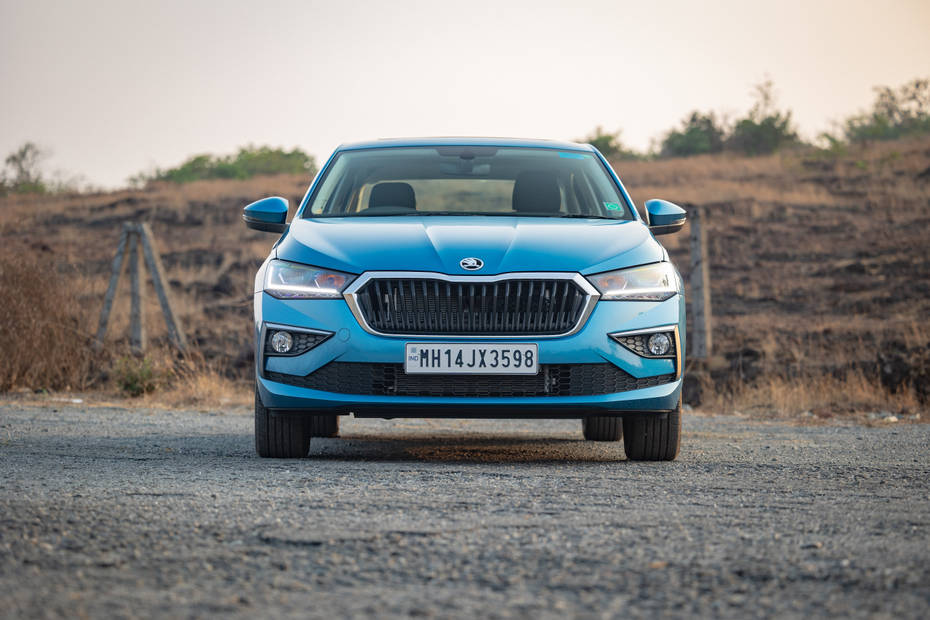
Stomping on the brakes of the four compact sedans generated results that were rather close to each other. The Honda City came last and took a whole extra meter over the third-place Verna to come to a halt. The Skoda Slavia and VW Virtus took nearly the same distance to come to a standstill, but the Slavia inches ahead with a shorter stopping distance of 40.05 metres from 100kmph, handing the Virtus the second spot on the podium.
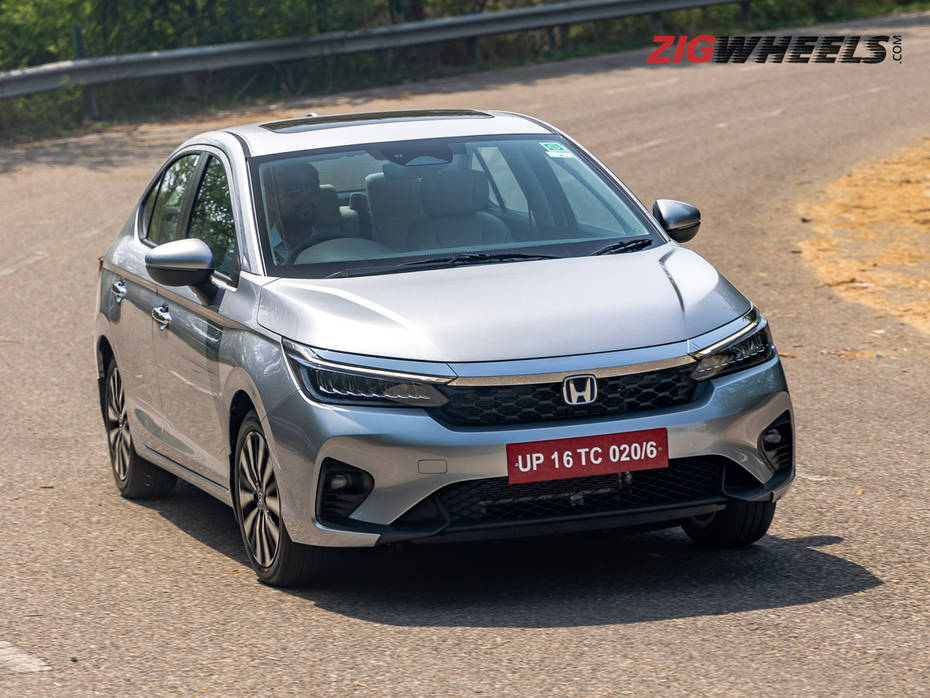
Time to strap a jug full of water to the roof of the sedans and pilot them through a broken patch of road to see which one has the cushiest and most isolating ride of the lot. The Honda City spilled the most water with 165 ml of water remaining after the test, while the Virtus followed closely with just 5 ml more water saved compared to the City. The Verna ran closely in second place with 175ml of remaining water, while the Slavia is a runaway winner in this test with the jug still holding 200ml of fluid at the end of its run.
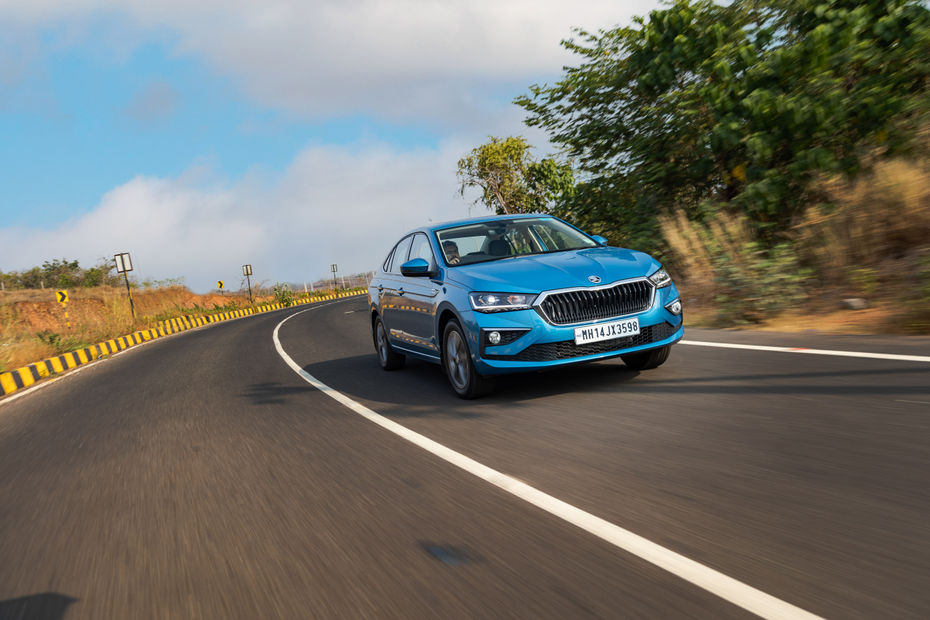
The City and the Slavia both have a softer setup, but the Slaiva has more suspension travel and is able to soak up the rough roads and sharp bumps really well. The Virtus has the firmest suspension setup here, but still manages to absorb the bumps rather well, while feeling planted and confident on the highway and around corners too.
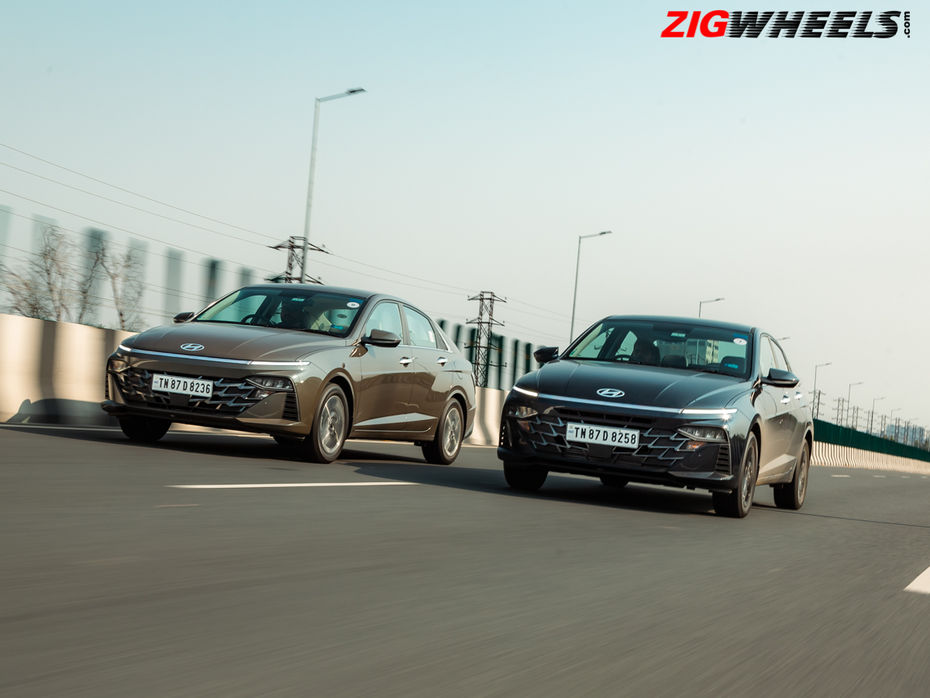
The Verna too, sits on the stiffer end of the spectrum. And while it tackles the potholes and undulations relatively well, the suspension seems to run out of travel quickly. As a result the bigger bumps and potholes can be felt inside the cabin if you don’t slow down for them.
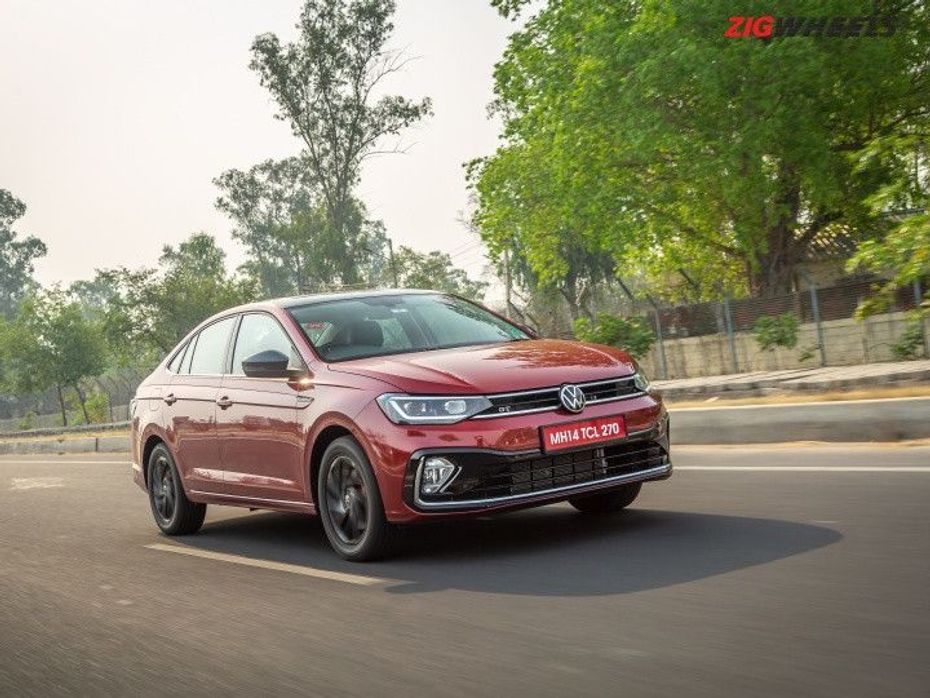
Overall, the Honda feels more suited to city speeds and bumpier terrains, while the Slavia is as planted on highways as it is on our substandard urban roads. The Verna and Virtus, on the other hand, offer a well-rounded package with stable high-speed manners and an equally good ride in the city.
You know the routine. Set up the cones and cameras and make sure everyone’s out of the oopsie range when steering the cars around our long-standing left hander. Starting with 65kmph, all the cars managed to navigate around the corner without any drama. But the same can’t be said for 70kmph. The Honda City drifted wide instantly when turning into the corner and continued to run wide, hitting two cones in the process.
Fun fact: The pre-facelift City managed the same corner at the same speed by knocking just one cone the last time around.
The Slavia too went wide, and in fact, it went a bit wider than the City and hit two cones. The rear end of the Skoda seemed to step out a tad bit more in comparison to the Japanese sedan and hence goes even wider. The stiffer Volkswagen Virtus boasts gets a chance to shine with its dynamic capabilities which make it clip just the one cone. It felt stable going into the turn, and only went wide towards the end of the corner.
Surprisingly, the newcomer had a secret weapon of sorts in its arsenal as the Verna managed to navigate the corner without any drama. In fact, it never came close to hitting a cone and that’s because the ESP kicked in mid corner, making its rear step out a bit, and tightening the line that it was following. Neatly done indeed.
Naturally, we had to plot it around at a speed where it won’t take the corner so neatly, and so we did. At 75kmph, things became very lively - it ran wide, stepped its tail out, knocked down two cones and managed to scare the living hell out of our beloved cameraman, Neeraj. Still, despite this drama at 75kmph, at 70 kmph the Verna clearly came out on top and actually had us smitten by its dynamic ability. You can have a look at the four sedans taking the corners for yourself here:
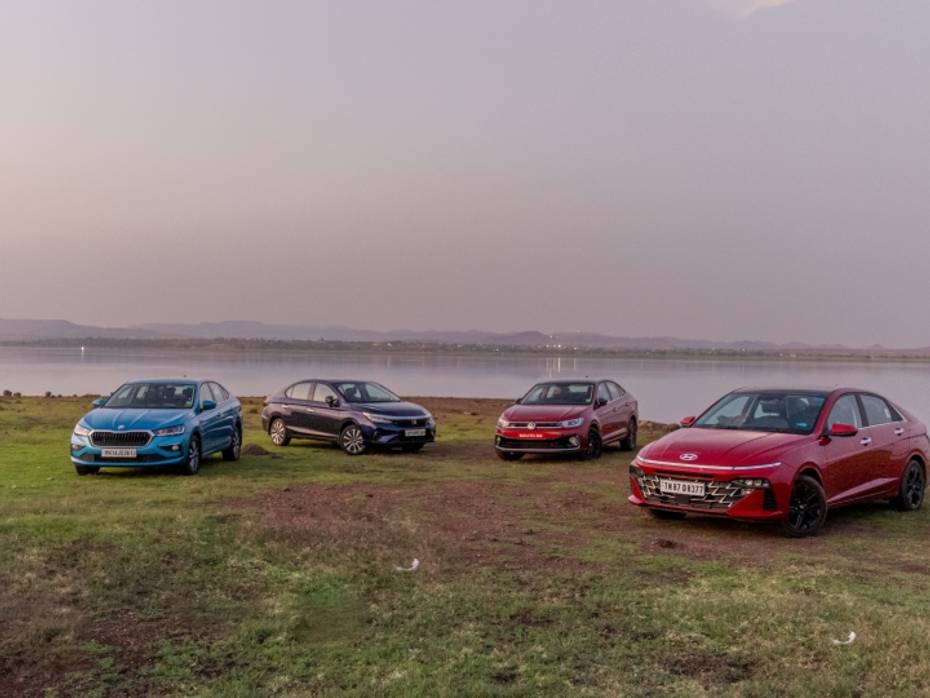
Factoring in all the results from the four tests, the Verna comes out on top with flying colours. With a total score of 13 points (four being the highest and one the lowest for each test), it grabs the pole position with two points to spare over the next spot, which happens to be a tie between the Virtus and Slavia cousins. With just five points on the board, the Honda City brings up the rear but the big points difference is purely down to our simplified points system to differentiate between the cars. In the real world, these cars are a lot more closely matched in all of these tests, even more so than most segments. So picking either one really is fine.
Speaking of picking one of them, here’s a table of their pricing, an important point of considerations, one where the City does hold an advantage.
|
Honda City |
Skoda Slavia 1.5-litre turbo petrol variants |
Volkswagen Virtus 1.5-litre turbo petrol variants |
Hyundai Verna 1.5-litre turbo petrol variants |
|
|
Price |
Rs 11.49 - Rs 15.97 lakh |
Rs 14.94 - Rs 18.55 lakh |
Rs 18.57 lakh |
Rs 14.83 - Rs 17.37 lakh |
Sure, there’s a more expensive hybrid avatar of the City as well, but we had the petrol-only City on test, so we won’t take the City Hybrid into the picture.
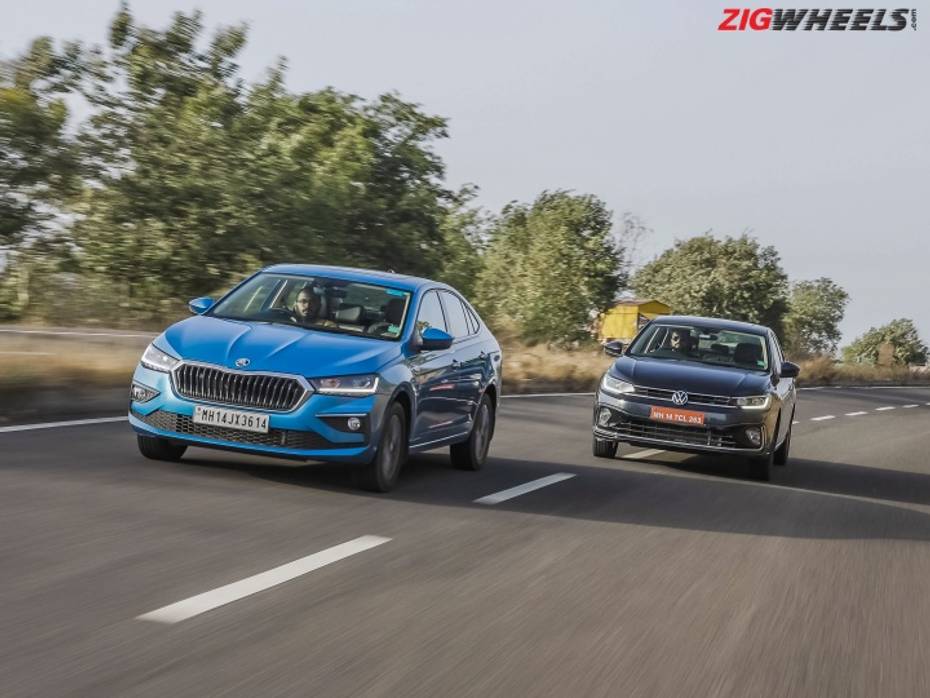
But even still, this was a lot closer than we were expecting it to be and the Hyundai Verna really impressed us with its all-rounder traits. It has the puissance to match the VW-Skoda cousins and even rides as well as them.
So a segment benchmark then? We’d suggest you hold onto that verdict until you’ve had a look at the space and practicality comparison of the four sedans, done by our sister channel CarDekho. But in terms of just ride and handling, there’s no doubt that the Hyundai Verna has a sure-shot edge over its peers.
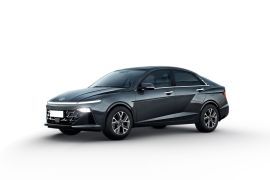

Honda City vs Skoda Slavia vs Volkswagen Virtus: Triple Threat Sedans...

Volkswagen Virtus First Drive Review: Does The City Need To Sweat?

Hyundai Creta 2024 Review: First Drive

Honda City First Drive 2023 | Do you love sedans too?

Skoda Slavia vs Honda City: War For The Segment’s Top Spot

Skoda Slavia vs Kushaq: Sedan Or SUV For The Win?

Skoda Slavia 1.5-Litre First Drive: RS Incognito?

Skoda Slavia First Drive: Sedan Story Revival?

2024 Kia Sonet Review: The Ideal SUV For The Small Family?
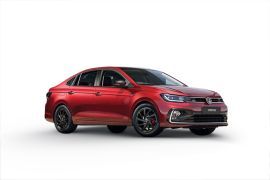 Volkswagen Virtus
Volkswagen Virtus
 Hyundai Creta
Hyundai Creta
 Honda City
Honda City
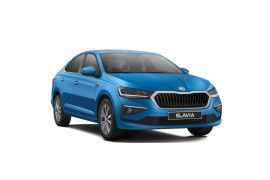 Skoda Slavia
Skoda Slavia
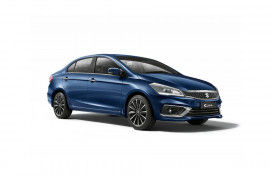 Maruti Ciaz
Maruti Ciaz
India's largest automotive community